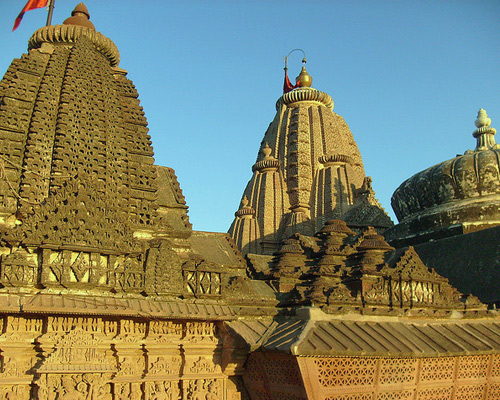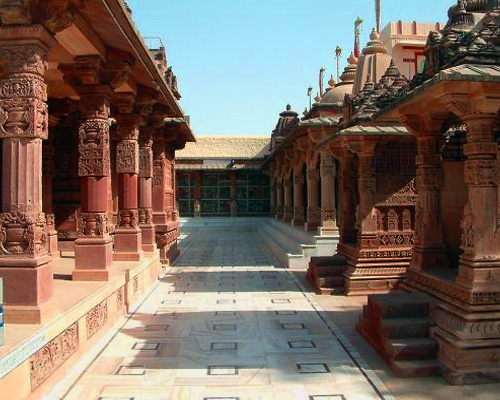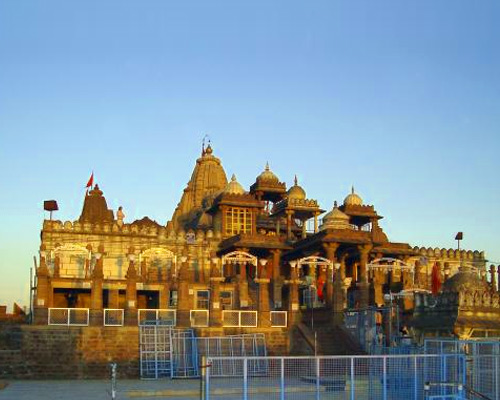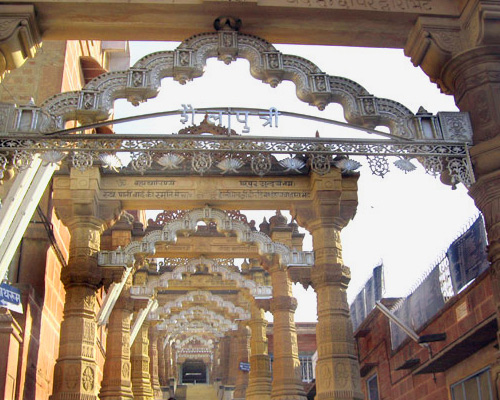Osian, -
General Information
Other Name:OsiyanDistrict:JaisalmerState:RajasthanCountry:IndiaArea:0Language Spoken:English, Hindi, RajasthaniLong Distance Code:0291Importance:Ancient temple complex of RajasthanBest Time To Visit:October to March and -International Access:Nearest Airport is JodhpurDescription:
Osian is an important Jain pilgrimage center for the Maheshwari's and Oswal Jain community. The (Mahavira, महावीर) Temple, built here in A. D. 783, is an important tirtha for Jains built by Gurjara Pratihara King Vatsaraja. The Jain Harivamsa Purana refers to Vatsaraja's rule in Saka year 705 (A. D. 783). It is believed that he was highly influiential in Upakesapura (Osian), as inscriptions of Vikram Samvat dating back to 1013 (A. D. 956), and referring to this place, have been found. In "Nabhinandana-jirnodhara Prabandha" -:Upakesapura has been described as the Svastika (a mystical mark denoting good luck) of the earth, an ornament of the desert endowed with natural beauty where the groves are full of trees and the noble ascetics are wifeless (adara), but amongst the citizens none are like that; where the beautiful damsels and the peacocks educate each other without formal instructions merely by observing each other's graceful gait; where the tanks are replete with fully blossomed lotuses and the nocturnal darkness is dispelled by the light emanating from the luminous gems and where the rays of moon entering during the night through latticed windows in the houses of fair ladies, separated from their spouses, appear like the silver-arrows hurled by Cupid. Shorn of its usual literary exaggerations, the description does indicate that Osian was an important flourishing town then. The derivation of the cast name Oswal from Osian - the place name also sounds acceptable as it is a common practice in India to derive the family names from place names.Location:
Osian (Osiyan) is an ancient town located in the Jodhpur District of Rajasthan state in western India. It is an oasis in the Thar Desert, and has been known as the "Khajuraho of Rajasthan" for its temples. The town is a panchayat village and the headquarters for Osian Taluka. It lies 69 km (43 miles) by road north of the district headquarters at Jodhpur, on a diversion off the main Jodhpur – Bikaner Highway.Climate:
Nestled in the foot hills of the Aravalli Mountain Range, a Tour to Rajasthan is considered to be a definite must include if you are planning a tour itinerary to India. The land of the Rajputs, the entirety of the province of Rajasthan is resplendent in its rich and varied culture, a culture that has been influenced to a large extent by the varied topography of Rajasthan which has also influenced the Climate of Rajasthan. Influencing several theories on the Best Time to Visit Rajasthan, the climate of Rajasthan can be divided into four basic sub divisions which are: -Summers -Monsoon -Post-Monsoons -Winters Summers which are hot and dry is considered to be the hottest period in Rajasthan with the temperature rising to almost as high as 45 degrees Celsius at its highest. The hill station of Mount Abu, the only hill station of Rajasthan, however, remains a blessed exception in this mercurial madness with temperatures at this important tourist destination of Rajasthan hovering around comfortable lows. The period between the months of July to September sees the mercury dropping to a more moderate temperature, with a comparatively higher level of humidity which is to set the stage for the next season or the monsoons, when the tourist attraction of Rajasthan reaches an all time high. The monsoons make this already beautiful province prettier than ever by adding their cool moisture to the hot, golden sands of the Thar Desert, which adds an even greater incentive in planning a trip to Rajasthan during this period. Perhaps, one of the most pleasant times to visit Rajasthan, the winters in Rajasthan stretch between the months of December to March. January is seen to be the coolest month of the year, which often sees a temperature drop that is as drastic as 0 degrees Celsius.



